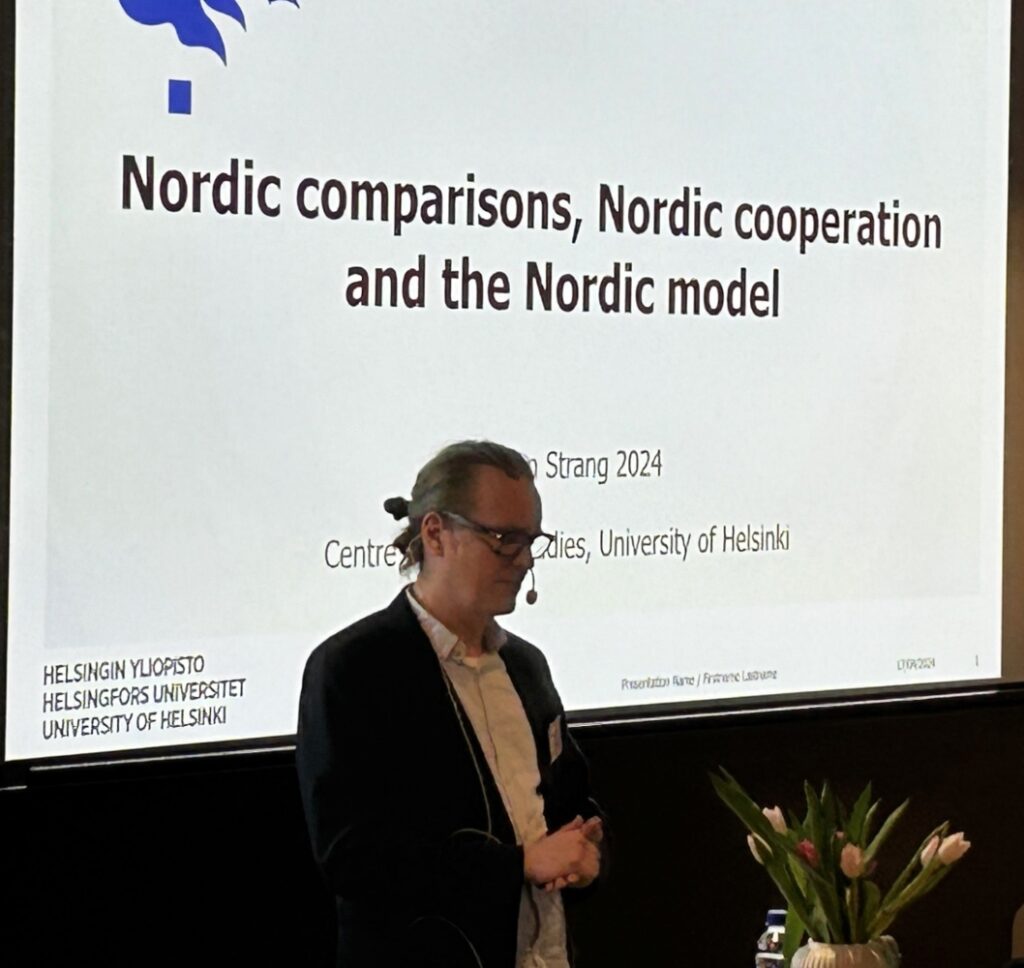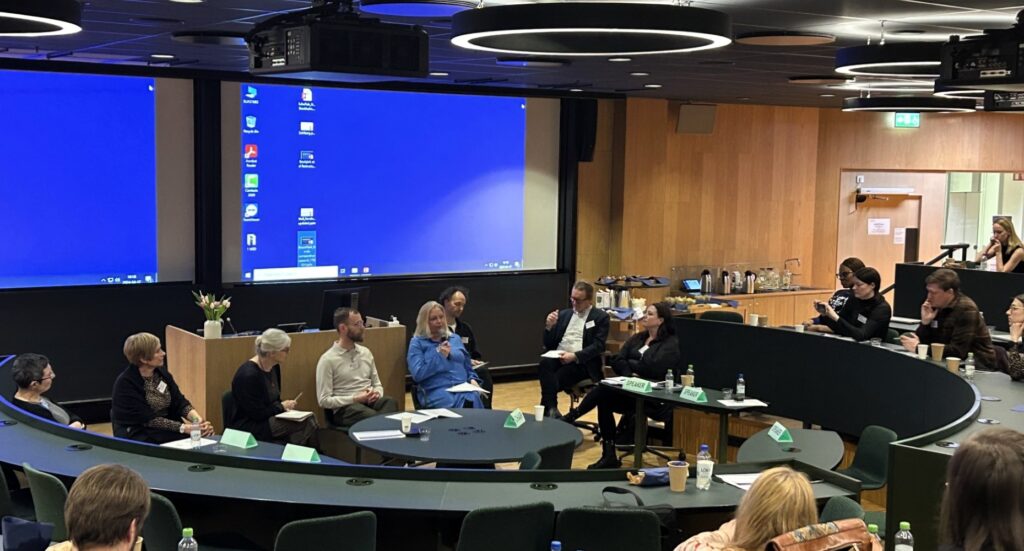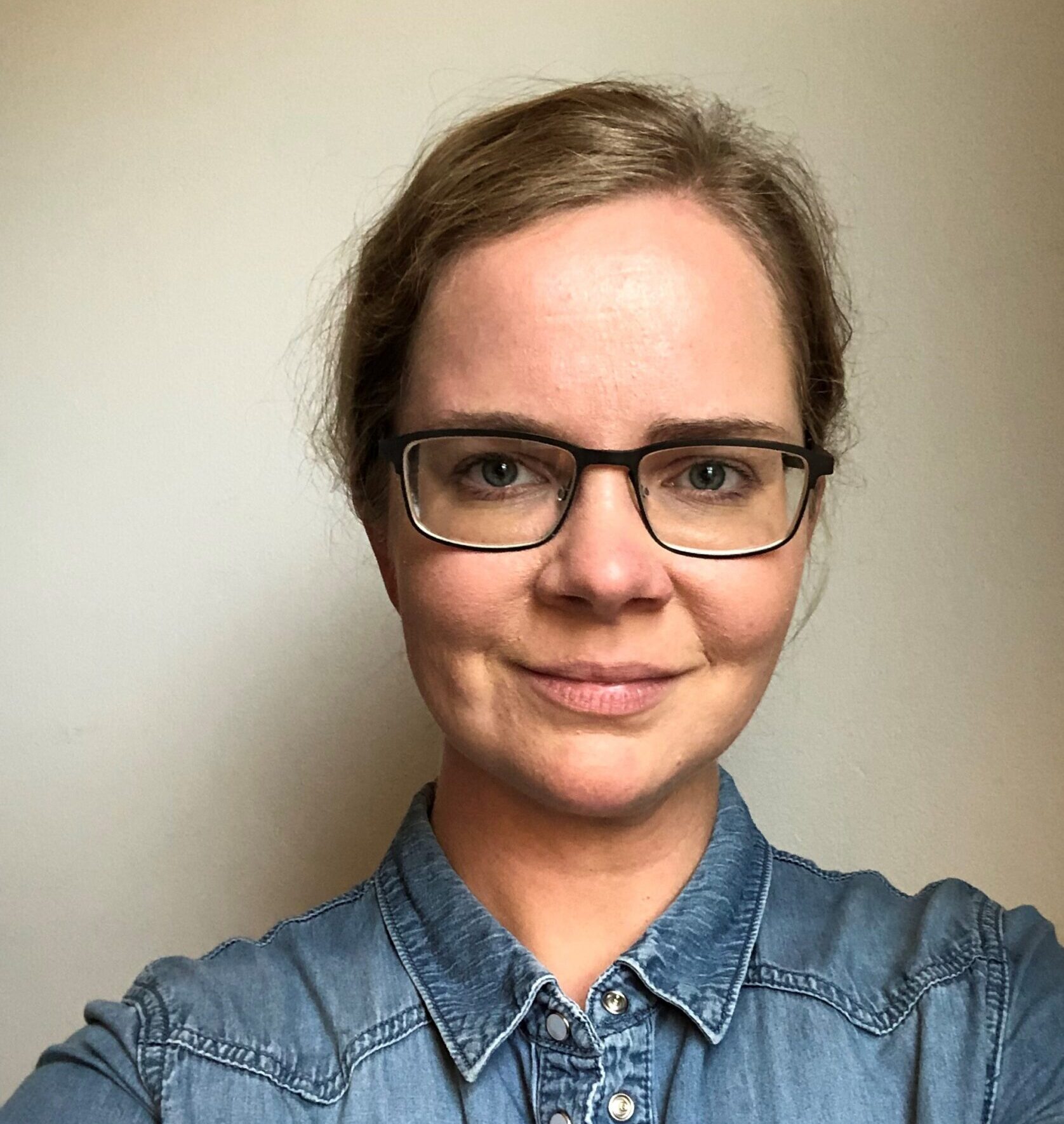A conference titled Nordic Comparative Research on Addictive Substances and Behaviors – Advancing by Comparing brought together some 70 people from the alcohol, tobacco, drugs, doping and gambling (ANDTG)-field for three days in Stockholm in April. Many presentations on current projects and research topics were given – in this article, we will only scratch the surface and describe a few.
The pandemic kept the Nordic ANDTG-research community apart for a few years – with the exception of NADRA 2022 – and taught us all how to meet and collaborate online. As an effect of this, travelling money has been scarce, and many working within this field have not been able to meet face to face for quite some time. In order to reverse this trend the Department of Public Health Sciences at the University of Stockholm organized a physical conference, funded by Forte. The theme? Comparisons, comparisons, comparisons.
A long tradition of Nordic collaboration – let the fun begin!
On day one, Johan Strang (University of Helsinki) provided insight into the shared Nordic history, illustrating the origins of cooperation among the Nordic states. Over the years, exchanges of comparisons, collaborative efforts, and occasional rivalries have informed best practices and policy alignment, yet challenges persist. Strang highlighted a Nordic renaissance marked by integrated economies, defense cooperation, and the emergence of the Nordic brand, but also acknowledged the region’s struggle with outdated forms of collaboration amidst the growing significance of global platforms.

Kjetil van der Wel (Oslo Metropolitan University) discussed Nordic register data, likening it to a goldmine rather than a Klondike. He highlighted the potential of this valuable resource for research but also addressed the obstacles that researchers still face in utilizing Nordic comparative register data.
Janne Scheffels (Norwegian Institute of Public Health) presented the NADNIC project, that has looked at adolescents use of novel tobacco products in Finland, Norway and Denmark with the help of cross country multimethod approach. Read more about NADNIC here.
Tove Sohlberg (Dept. of Public Health Sciences, Stockholm University) talked about a recently finished mapping of labour market integration in the Nordic countries, that looked at policy direction, laws and regulations, organization of services as well as interventions. Download the report here.
Håkan Wall (Centre for Psychiatry Research, Karolinska institutet) presented a study on Nordic gambling helplines, highlighting their significance in providing data on problematic games. He described these helplines as “ears against the rail”, offering insights into the harms caused by various types of games. While new forms of gambling like skin betting and crypto gambling have emerged as problematic, longitudinal data from Sweden, Finland, and Denmark from 2019-2022 revealed online casino games as the most problematic. Read more here.
Kim Bloomfield (Centre for Alcohol and Drug Research, Aarhus University) took us back to some of her early projects and studies conducted in the 1990’s, pointing out how the comparative methodology has evolved and improved. Bloomfield reflected upon the whole field, stressing that it requires skills and knowledge to succeed in comparing different datasets and contexts, unless we want to end up with those pesky apples and oranges.


Straits or oceans between us?
Day two commenced with Henrik Tham (Dept. of Criminology, Stockholm University) reflecting on the Nordic societies’ approach to policies regarding illicit drugs. As our societies evolve and change, our perspectives on drug use also shift. Tham highlighted generational gaps, the influence of social media, and the trend of other Western countries liberalizing their drug policies as factors influencing domestic policies as well.
Torkel Richert (Dept. of Social Work, Malmö University), Esben Houborg (Centre for Alcohol and Drug Research, Aarhus University), and Julie Holeksa (Dept. of Social Work, Malmö University) have contributed to studies examining the Öresund region, revealing it as a dynamic environment for individuals using drugs. Richert and Houborg have conducted interviews with users to illustrate how two welfare states with distinct drug policies impact vulnerable groups in terms of living conditions and access to services.

Holeksa focused on interviewing Swedish users who spend time in Denmark to access user rooms and other services unavailable on the Swedish side. Both studies indicate that Malmö poses more challenges for users, with more unsafe places, increased police issues, and heightened stigmatization.
Jakob Demant (Dept. of Sociology, University of Copenhagen) described emerging drug markets online – and how easy it seems to be to get a hold of illicit drugs on various social media platforms such as Snapchat or Instagram. Read more about the markets here.
Olof Östergren (Dept. of Public Health Sciences, Stockholm University) talked about register studies, and how data collected in several different contexts can be challenging to compare. Östergren et al. have studied mortality patterns among Finnish migrants living in Sweden. Read more on that topic here.
Heta Moustgaard (University of Helsinki) and colleagues, in turn, have studied effects of depression in alcohol-related deaths in Denmark, Sweden, Finland and Italy. That study can be accessed here.

Inger Synnöve Moan (Norwegian Institute of Public Health) and Kirsimarja Raitasalo (Finnish Institute for Health and Welfare (THL) presented studies based on European School Survey Project on Alcohol and Other Drugs (ESPAD)-data. Raitasalo talked about cannabis use, while Moan addressed alcohol consumption among Nordic adolescents. Read more about that here.
Let’s keep on comparing
The third day started with presentations by Thomas Karlsson (Finnish Institute for Health and Welfare (THL)), Virve Marionneau (Centre for Research on Addiction, Control and Governance (CEACG), University of Helsinki) and Jenny Cisneros Örnberg (Dept. of Public Health Sciences, Stockholm University).
As we tend to lump together alcohol, drugs, tobacco, doping and gambling under one public health colored umbrella, we also need to explore similarities and differences between the substances and policy measures. Karlsson devoted a large part of his presentation to the liberal U-turn in Finnish alcohol policy that seems to be happening at the moment, and Marionneau addressed the fact that Finland will shift into a licensed-based gambling market in 2026.

Pekka Hakkarainen also portrayed a Finnish context, as he presented the large scale project Out of Despair. Drug related deaths are a core theme of the research consortium. That is also the theme of a forthcoming special issue of NAD. Read the call for papers here.

Three take-home messages
Borrowing President Alexander Stubb’s rhetoric, and summing it all up in three points:
- The conference was a valuable and welcome effort to remind us about the importance of maintaining a strong network in our region, and within the ANDTG-community.
- It also served as a stepping stone for further collaboration opportunities.
- After all, the Nordic welfare states are much alike, and as we face similar challenges in the public health field we might as well tackle them more efficiently together.


